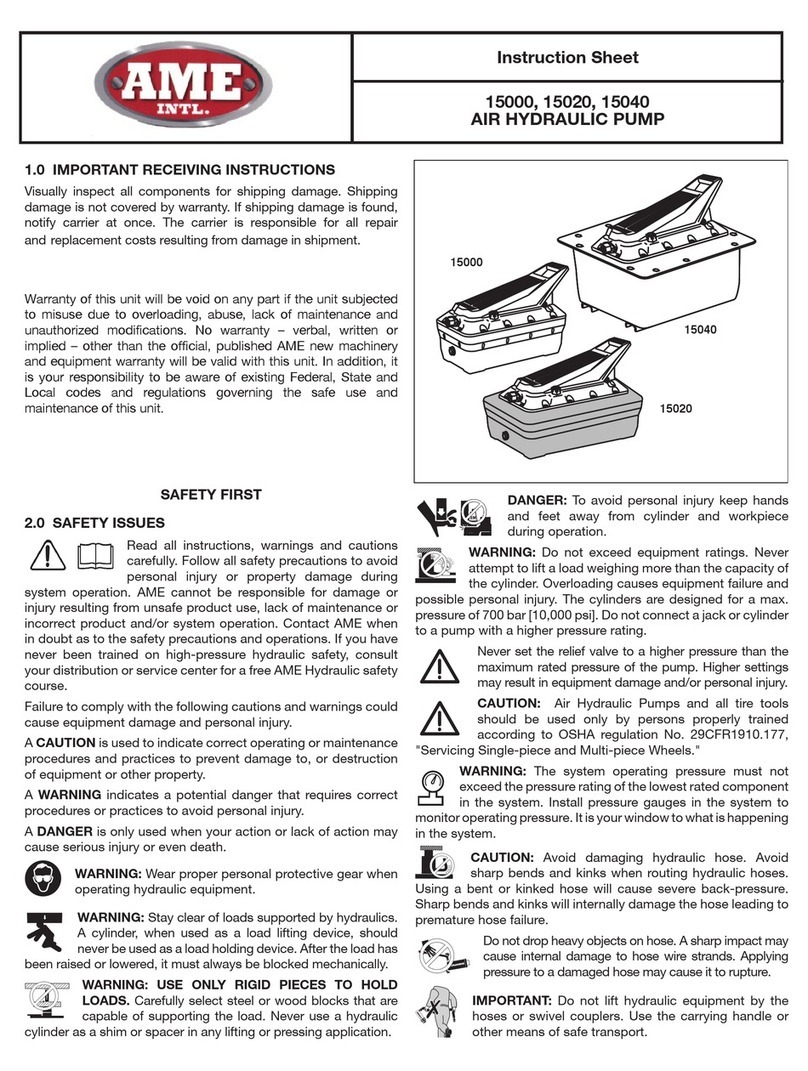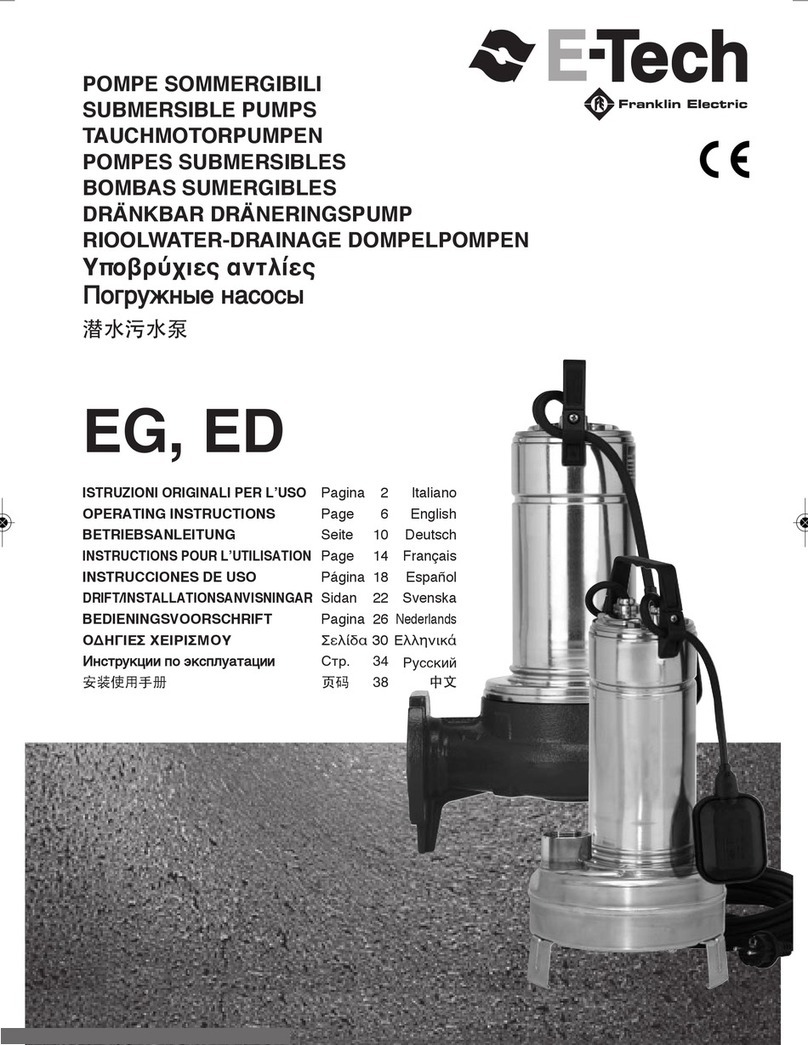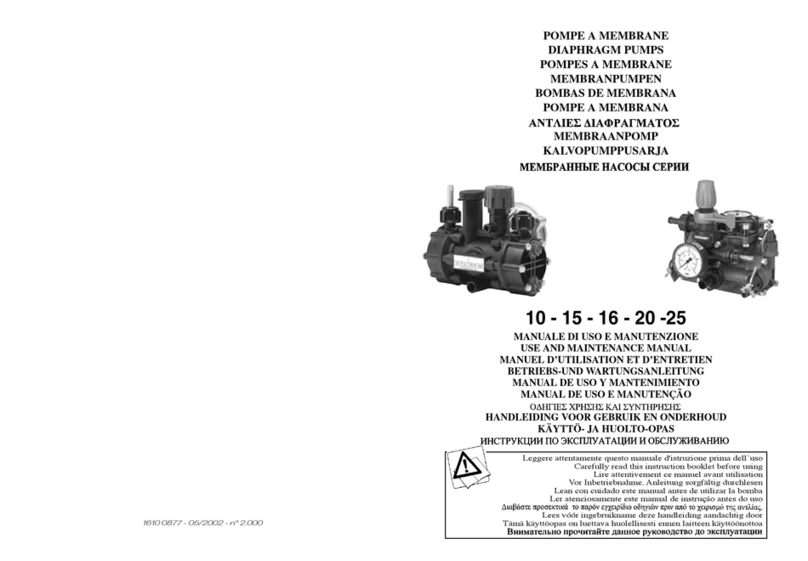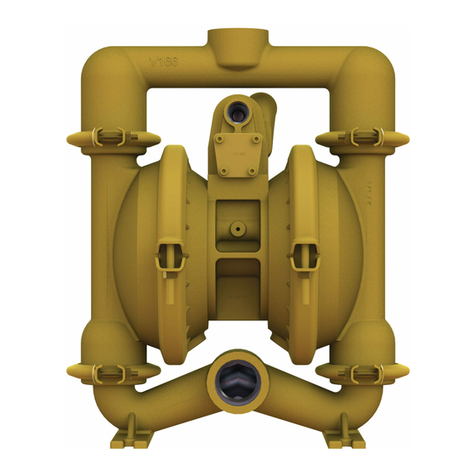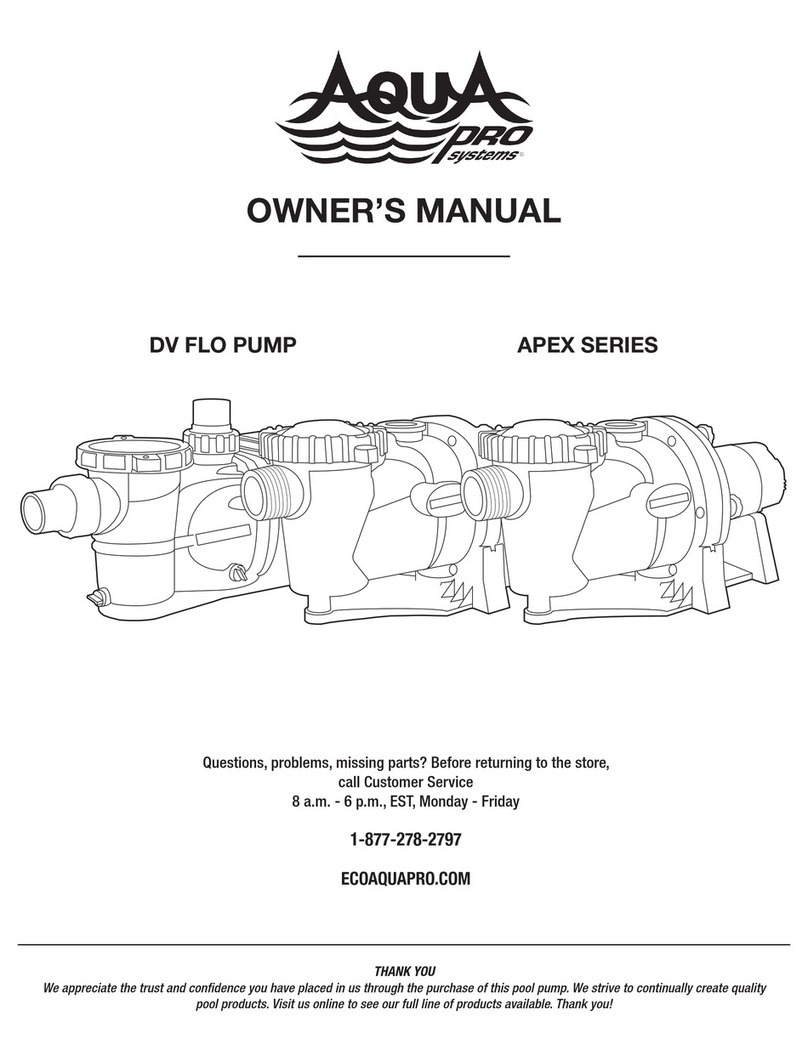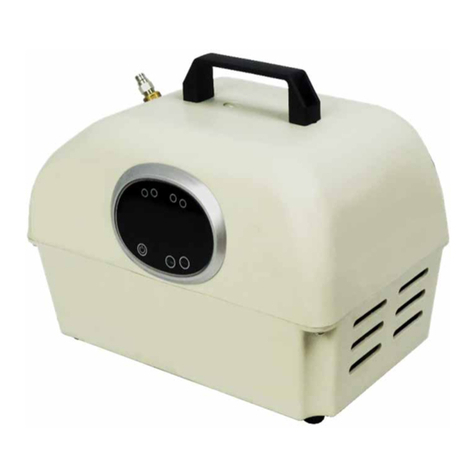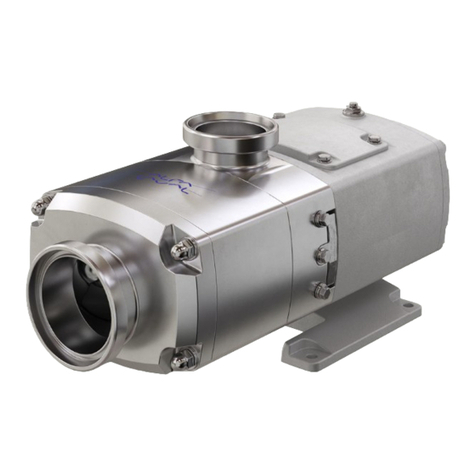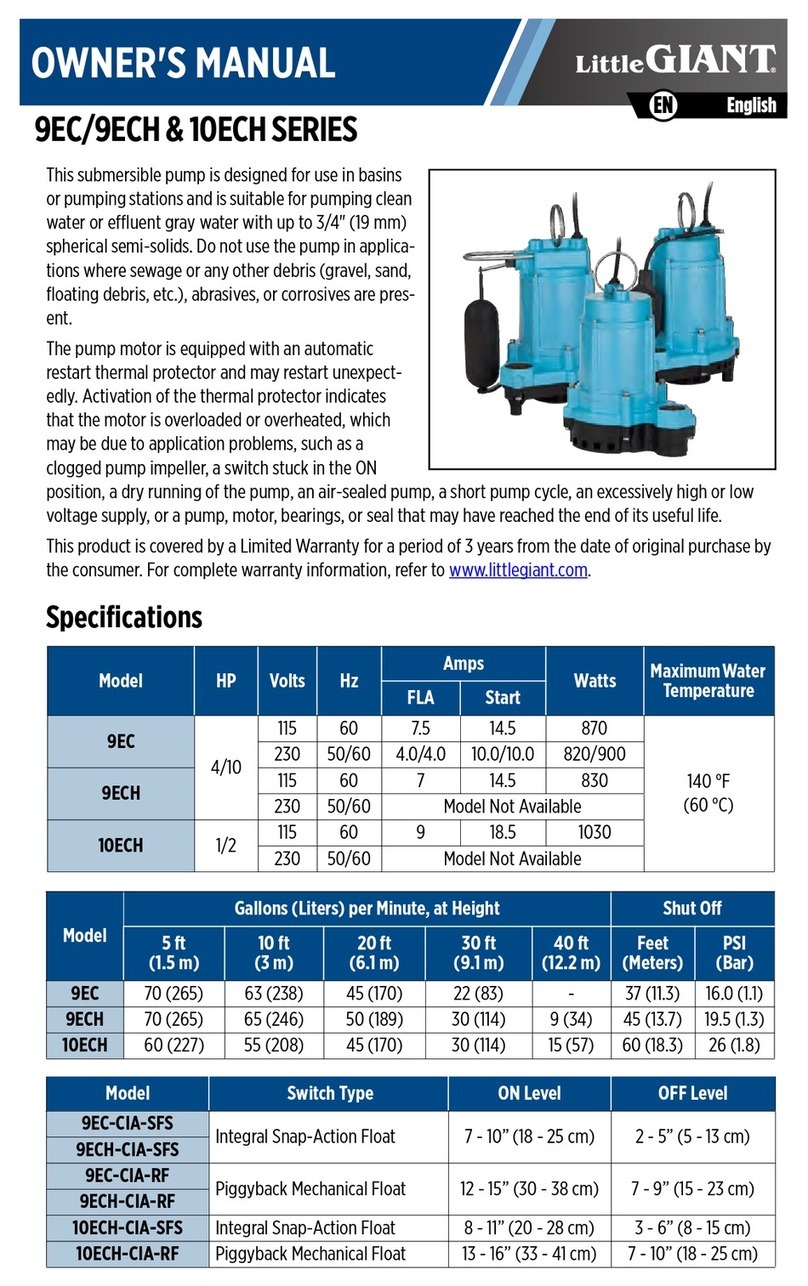Roper F Series User manual

1
F SERIES TYPE 27
OWNERS MANUAL
G12-208
06/13/16
SAFETY INSTRUCTIONS
This is an industrial component. Only a qualified systems integrator should be allowed to
design it into a system. The integrator must determine proper plumbing, mounting, driveline
and guard components.
Improper installation or use could lead to a serious, even fatal, accident. The system
integrator must communicate all safe operation procedures to the end user(s).
Before operation, fully understand and follow the instructions shown in this manual and any
instructions communicated by the system integrator. No one should be allowed to operate or
maintain this pump that has not been fully trained to work safely according to the
configuration of the pump system and in accordance with all applicable government and
industry regulations.
DO NOT paint over nameplates, ID tags or warning tags.
Confidential & Proprietary: This document contains confidential and proprietary information which is the exclusive property
of Roper Pump Company, Commerce, GA. U.S.A. and shall not be reproduced, communicated, disclosed, or disseminated in
any manner to third parties or used for any purpose other than its intended purpose without prior written consent of the
management of Roper Pump Company.
Roper Pump Company
P.O. Box 269
Commerce, GA 30529 USA
Telephone: (706) 335-5551
TeleFAX: (706) 335-5490
Email: [email protected]
www.roperpumps.com

2
TABLE OF CONTENTS
WARNINGS & GENERAL GUIDELINES.........................................................................................3
System Pressure & Hazardous Fluids ........................................................................................................................4
Plumbing .....................................................................................................................................................................4
Mounting Base ............................................................................................................................................................4
Pump and Drive Assemblies.......................................................................................................................................4
Check Alignment of Pump to Driveline .......................................................................................................................4
Roper Pumps’ Close Coupled Drives..........................................................................................................................5
Guarding PTO Drive Shafts ........................................................................................................................................5
NAMEPLATE DATA ........................................................................................................................6
A. Figure (Model Number)...............................................................................................................................................6
B. Spec............................................................................................................................................................................6
C. Type ............................................................................................................................................................................6
D. Serial Number .............................................................................................................................................................7
MAXIMUM PUMP RATINGS............................................................................................................7
PRE-OPERATIONS CHECK............................................................................................................8
RECOMMENDED TOOL LIST.........................................................................................................8
DIRECTION OF ROTATIONS..........................................................................................................9
1 & 2 F1-F100 “W” (CW) ROTATIONS...............................................................................................................................9
1 & 2 F1-F100 “X” (CCW) ROTATIONS............................................................................................................................10
17 & 18 F10-F100 “W” (CW) ROTATIONS.......................................................................................................................11
17 & 18 F10-F100 “X” (CCW) ROTATIONS......................................................................................................................12
17 & 18 F1-F5 “W” (CW) & “X” (CCW) ROTATIONS........................................................................................................13
1 & 2 F75-F300 “W” (CW) & “X” (CCW) ROTATIONS......................................................................................................14
LUBRICATION...............................................................................................................................15
RELIEF VALVE..............................................................................................................................15
RELIEF VALVE .................................................................................................................................................................16
TO ADJUST RELIEF VALVE.........................................................................................................17
TO REPLACE SPRING/PISTON OR CHANGE DIRECTION OF PUMP.......................................18
MECHANICAL SEAL.........................................................................................................................................................19
PACKING.......................................................................................................................................21
PARTS LIST & CROSS SECTIONALS .........................................................................................23
1 & 2 F1 – F5 SPEC 0.....................................................................................................................................................24
1 & 2 F1 – F5 SPEC 5.....................................................................................................................................................24
1 & 2 F10 – F20 SPEC 0.................................................................................................................................................25
1 & 2 F10 – F20 SPEC 5.................................................................................................................................................25
1 & 2 F35 – F50 SPEC 0.................................................................................................................................................26
1 & 2 F35 – F50 SPEC 5.................................................................................................................................................26
1 & 2 F75 – F100 SPEC 0 & SPEC 17.............................................................................................................................27
1 & 2 F75 – F100 SPEC 5 & SPEC 174..........................................................................................................................27
1 & 2 F150 – F300 SPEC 17............................................................................................................................................28
1 & 2 F150 – F300 SPEC 174..........................................................................................................................................28
17 & 18 F1 – F5 SPEC 0.................................................................................................................................................29
17 & 18 F10 – F20 SPEC 0.............................................................................................................................................29
17 & 18 F35 – F50 SPEC 0.............................................................................................................................................30
17 & 18 F75 – F100 SPEC 0............................................................................................................................................30

3
WARNINGS & GENERAL GUIDELINES
WARNING: DO NOT paint over any nameplates, ID tags, or warning tags
attached to the pump.
Operating without guards
could result in serious
injury or death. Machinery
in operation can grab,
crush, cut, mangle, and
dismember. Do not
operate without adequate
guards in place.
Over-pressure may burst
pump or system components.
Always include a relief valve in
installation. Do not over
pressurize pump or block
discharge line while operating.
Injection Hazard: Do not try to
stop a leak with your hand!
Avoid any close contact with
hydraulic fluid jets. Escaping
fluid can penetrate skin,
causing serious injury. In case
of accident, seek medical
attention immediately for
removal of fluid.
Hazardous or Toxic fluids can
cause serious injury.

4
NOTICE: These are general guidelines and do not cover all possible situations. It is the
responsibility of the system integrator to apply this product properly.
System Pressure & Hazardous Fluids
1. Disconnecting fluid or pressure containment components during pump operation can cause property damage,
serious personal injury, or death.
2. Failure to relieve system pressure prior to performing pump service or maintenance can cause property
damage, serious personal injury or death.
3. If pumping hazardous or toxic fluids, system must be flushed and decontaminated, inside and out, prior to
performing service or maintenance.
Plumbing
1. The inlet pipe should be as short and straight as possible to minimize suction pressure losses. Excessive
restrictions at the inlet can cause cavitation resulting in poor performance, noise, vibration, or pump damage.
2. Slope the inlet plumbing appropriately to avoid air pockets.
3. Plumbing weight, misalignment with the ports or thermal expansion can exert excessive force on the pump.
Plumbing must be properly supported and aligned with expansion joints, if required, to minimize these forces.
4. To prevent over pressure situations, install a relief valve as close to the pump outlet as possible. Install the
relief valve before any shut-off valves.
DO NOT use Thread Seal (Teflon®) tape on pump port threads.
Mounting Base
1. Mount the unit on a rigid, heavy base to provide support and absorb shock. Bases should be designed for
high rigidity; not just strength.
2. The pump feet were not designed for mounting to concrete and do not have enough contact area to prevent
concrete from failing. When mounting to cement or concrete, use a steel baseplate to distribute the mounting
stress over an area large enough to prevent the cement from failing. Grout it in place.
Pump and Drive Assemblies
1. Assure adequate guards have been installed to prevent personnel contacting moving components.
2. Follow all OSHA, Federal, State, and local codes.
Check Alignment of Pump to Driveline
Excessive misalignment can overload the pump input shaft and cause premature failure. The figures below show
parallel and angular misalignments.
Figure 1-1: Coupling Alignment
Teflon® is a registered trademark of E.I. DuPont de Nemours Co., Inc.

5
Roper Pumps’ Close Coupled Drives
The hydraulic or gearmotor units mount directly to the pump.
oAlignment between pump and driveline is maintained by the assembly.
Because the assembly absorbs reaction forces of the driveline, the mounting base does not need to be as robust.
The level of rigidity and strength is determined by the piping stresses from the system
Guarding PTO Drive Shafts
PTO drive systems can be dangerous and when used, additional safety precautions, including guarding, is
required and must be provided by the drive system installer. Roper Pump Company has no responsibility for
recommending or providing proper guarding or other safety measures in any particular application.
NOTICE: The installation of proper guards for the power take-off and its associated equipment is the
responsibility of the drive system designer and the installer who know the particular product application
and the user’s exposure to danger. The ultimate responsibility for the safe application and
installation is the users.
WARNING: Failure to stop the pump before adjusting the shaft packing can cause
serious injury or death.

6
NAMEPLATE DATA
Roper Pump Company identifies each pump manufactured by a metal nameplate attached to the pump. This
nameplate describes the pump as built at the factory. Copy the nameplate data from your pump in the area provided
below. Use this for ready reference when ordering repair parts or when consulting with a Roper distributor or Roper
Pump Company about this pump.
PUMP NOMENCLATURE EXAMPLE: PUMP NOMENCLATURE (from your nameplate):
FIGURE 1F15-0-27 FIGURE:_____________________________
SPEC 00000 TYPE 27 SPEC:__________________ TYPE:______
SERIAL NO. 000000 SERIAL NO.__________________________
A. Figure (Model Number)
The figure number consists of a five, six, or seven digit number.
The first and, in some instances, the second digits indicates the mounting arrangement and relief valve (RV).
1 = Foot mounted, No RV 25 = Baseplate mounted, No RV
2 = Foot mounted with RV 26 = Baseplate mounted with RV
17 = Flange mounted, No RV 33 = Close Coupled, No RV
18 = Flange mounted with RV 34 = Close Coupled with RV
The next digit indicates F series: F
The next two or three digits indicate the approximate theoretical displacement in US gallons per 100 revolutions
[Liters/100 rev].
F1 = .00086 (3.2 CC/REV) F15 = .0103 (39.0 CC/REV) F75 = .075 (283.9 CC/REV)
F3 = .002 (7.6 CC/REV) F20 = .0124 (46.9 CC/REV) F100 = .107 (405.0 CC/REV)
F5 = .003 (11.4 CC/REV) F35 = .034 (128.7 CC/REV) F150 = .186 (704.1 CC/REV)
F10 = .007 (26.5 CC/REV) F50 = .050 (189.3 CC/REV) F200 = .232 (878.2 CC/REV)
The next letter indicates the direction of rotation and shaft position. All rotations are facing the drive shaft end. Not
all rotations are available for all sizes. See pages 9 thru 14 for illustrations and further explanation of directions of
rotations. CW = clockwise rotation; CCW = counterclockwise rotation.
High Drive:
No letter or W = CW (standard rotation for most sizes)
X = CCW
B. Spec
Occasionally, special pumps or configurations are required which are unique for a particular application. These
modifications are clarified by a SPEC ie: specification number. Identification of any items different than a standard
pump can be made by consulting Roper Pump Company or an authorized distributor.
Spec 0 – Mechanical Seal, Tapped Ports Spec 17 – Mechanical Seal, Flanged Ports
Spec 5 – Packed Box, Tapped Ports Spec 174 – Packed Box, Flanged Ports
C. Type
The TYPE number is a number used by Roper Pump Company for in-house identification of construction and
hydraulics. Always include the type number in any references to the pump.

7
D. Serial Number
The SERIAL number is a unique number assigned to each pump built by Roper Pump Company.
In any communication concerning this pump, always be sure to include the Model, Spec, Type, and Serial number so
proper identification of the pump can be assured.
As stated in the explanation of the pump nomenclature, all characters may not appear on every pump nameplate. The
preceding description of the figure number is to assist in identifying your Roper F Series pump only. DO NOT attempt to
derive any ratings or performance from the figure number. DO NOT use the explanation of the figure number to construct
your own pump. Not all combinations are possible. For assistance in pump selection, it is recommended that you consult
Roper Pump Company or an authorized distributor.
MAXIMUM PUMP RATINGS
Maximum Ratings
Pump Size Flow Rate GPM Pressure PSI *Temperature °F Input Speed RPM
F1 3.5 300 212 3600
F3 7.3 300 212 3600
F5 12.2 300 212 3600
F10 22.6 300 212 3600
F15 39.3 300 212 3600
F20 46.0 300 212 3600
F35 61.2 300 212 1800
F50 63.6 300 212 1200
F75 87.6 300 212 1200
F100 129.6 300 212 1200
F150 234.6 300 212 1200
F200 213.7 300 212 900
*Temperatures up to 250°F may be achieved using material options available. Consult factory for details.

8
PRE-OPERATIONS CHECK
Read and understand the instructions and recommendations contained in this manual.
Disconnect the coupling between the driver and pump.
Test the rotation of the driver to make sure it will operate the pump in the desired direction of rotation. When an
integral relief valve is used, make sure it is positioned and adjusted as discussed on page 17 “TO ADJUST RELIEF
VALVE”. After the unit is mounted and the piping is connected, the pump should be checked to be sure it operates
freely without binding. After operation is proved satisfactory, both pump and driver should be tightly secured and the
alignment rechecked before operation.
Before starting, make sure all guards are in place and the inlet and discharge valves are opened.
After starting the unit, check to see that the pump is delivering liquid. If not, stop the driver immediately and correct
the problem. After the pump is delivering liquid, check the unit for: excessive vibration, localized heating, or excessive
shaft seal leakage. Check the pressure or vacuum by installing gauges at both the inlet and discharge sides of the
pump to make sure the pressure or vacuum conforms to specifications.
RECOMMENDED TOOL LIST
NOTE: Tools are not furnished with the pump.
Tools for all Pumps:
(1) Safety Glasses
(1) 7/16” Combination Wrench
(1) 1/2” Combination Wrench
(1) 9/16” Combination Wrench
(1) 8oz. Ball-Peen Hammer
Additional Tools for Pumps with an RV Type Relief Valve:
(1) 18” Pipe Wrench
Additional Tools for Pumps with Shaft Packing:
Packing Hook for .25” or .38” square packing rings
Additional Tools for Pumps with Mechanical Seals:
(1) 0200 External Retaining Ring Pliers

9
DIRECTION OF ROTATIONS
1 & 2 F1-F100 “W” (CW) ROTATIONS

10
1 & 2 F1-F100 “X” (CCW) ROTATIONS

11
17 & 18 F10-F100 “W” (CW) ROTATIONS

12
17 & 18 F10-F100 “X” (CCW) ROTATIONS

13
17 & 18 F1-F5 “W” (CW) & “X” (CCW) ROTATIONS

14
1 & 2 F75-F300 “W” (CW) & “X” (CCW) ROTATIONS

15
PRIOR TO OPERATING THE PUMP, MAKE SURE THAT
THE SHAFT ROTATION, PIPE CONNECTIONS, AND
THE RELIEF VALVE POSITION IS IN ACCORDANCE
WITH THE ILLUSTRATIONS SHOWN.
To reverse rotation, the relief valve must be positioned as shown for desired direction of rotation.
See appropriate instructions to change relief valve position if required.
For inlet pressures over 25 PSIG (1.7 BAR), consult a distributor, district representative or the
home office of the ROPER PUMP COMPANY, COMMERCE, GEORGIA.
LUBRICATION
All lubrication fittings have been greased at the factory. The internal parts of the pump are
lubricated by the liquid being pumped. Outboard bearing or bearing cage should be greased with
ball bearing grease once a month in daily service or equivalent in intermediate service.
RELIEF VALVE
The relief valve must be positioned as shown in instructions for direction of rotation—otherwise
the valve is inoperable and will not give protection.
It is mandatory that the relief valve be set BY THE USER since the maximum relief valve pressure
depends upon the viscosity and specific gravity of the liquid, the flow rate (pump RPM), and also
the initial relief valve setting. If not specified otherwise, the relief valve on this pump is factory set
for full by-pass at a differential pressure of 300 PSIG (20.7 BAR), at a pump speed of 900 to 1800
RPM on liquid with a viscosity of approximately 150 to 300 SSU (28 to 62 centistokes). This
setting would only apply if all these conditions are duplicated. Built-in relief valves sense
differential pressure only (difference between inlet and outlet pressures.)

16
RELIEF VALVE
PUMP SIZE
MAX EXTENSION INCH MILLIMETER
F1, F3 0.65 16.5
F5, F10 1 25.4
F15, F20 1.24 31.5
F35 1.13 28.7
F50, F75 1.06 26.9
F100 1.68 42.7
F150, F200 2.64 67.1
"A"

17
TO ADJUST RELIEF VALVE
Warning: Take precautions necessary to prevent personal injury or physical damage
That could be caused by any loss of the product being pumped while
Adjusting relief valve.
Relief valve must be adjusted under conditions identical to the operating conditions.
(Viscosity, RPM, etc.)
1. Connect a pressure gauge near the pump in the discharge line between the pump and the
point where the discharge line will be closed. (Most pumps have tapped and plugged
holes in the case near the outlet or in the discharge flange which may be used for this
connection.
2. Remove seal cap and gasket.
3. Loosen the locknut on the adjusting screw.
4. Back the adjusting screw out to the point where the end of the adjusting screw will be at
the max dimension “A” when measured from the relief valve bonnet. See the chart under
the relief valve drawing for the proper dimension.
5. Start pump and close the discharge line slowly. Do not exceed pressure rating of pump or
other equipment between pump and discharge line valve. If this pressure is reached while
closing the discharge valve, do not close any further. (This might occur with very high
viscosity liquids) it would then be necessary to install a separate relief valve in the system
for protection. Do not run pump with closed discharge line for more than two minutes at a
time.
6. With discharge valve closed, turn adjusting screw clockwise in ½ turn increments until the
pressure gauge shows the desired pressure setting.
7. Tighten locknut.
8. Replace the gasket and seal cap.
9. Open discharge line, and turn pump off.
Relief valve is now set.

18
TO REPLACE SPRING/PISTON OR CHANGE DIRECTION OF PUMP
To replace spring and/or piston or to change direction of rotation, shut pump off, remove seal cap
and gasket. Loosen locknut and adjust relief valve pressure to minimum. Remove bonnet and
gasket making sure that the spring pressure does not force bonnet out too rapidly. Remove plug
cap and gasket from faceplate. Check all parts and internal passages to make sure that they are
clean and free from rust or damage. To assemble, determine direction of rotation and replace
plug cap and gasket as shown in direction of rotation. Place poppet and spring in correct position
according to direction of rotation.
Turn adjusting screw to have shoulder flush with bonnet, place spring guide on adjusting screw;
install gasket and assemble into faceplate making sure spring engages over spring guide.
Tighten bonnet. Reinstall gasket and plug cap, if removed. Adjust relief valve pressure as
described.
A built-in relief valve should not be used on applications where the discharge must be closed for
more than a few minutes. Prolonged operation with the relief valve fully by-passing will cause
heating of the liquid circulating thru the valve, thus resulting in possible damage.
CHECK POPPET PERIODICALLY TO MAKE SURE THAT IT WILL SLIDE
FREELY IN PUMP FACEPLATE. FAILURE TO SLIDE DUE TO BINDING OR
FOREIGN MATERIAL WILL CAUSE EXCESSIVE PRESSURE BUILDUP IN
PUMP.

19
MECHANICAL SEAL
Mechanical seals do not require adjustments. Leakage developed at the seal may be due to one
of the following conditions; worn, marred, or cracked rotating or stationary lapped seal faces, or
bellows that has become hard, soft, cracked, expanded or extruded.
When replacing or servicing a mechanical seal, take particular care not to mar or scratch the
sealing surfaces or damage the bellows. If the seal has been used, do not put it back into service
unless both sealing surfaces are perfectly flat and smooth or else replaced.
To replace the mechanical seal on pump size F1 thru F5, remove the key, cap screws, bearing
cage, and gasket. Remove burrs and sharp edges from the end of shaft and keyway and clean
the shaft. Next the seal parts may be removed from the shaft. To assemble, lubricate with a light
machine oil the section of the shaft over which the seal is to be mounted. Slide the rotating
element onto the shaft. Be sure it is properly centered on the shaft. After checking the bearing
cage and lip seal and replacing if required, coat the sealing surfaces with light machine oil. Install
bearing cage and gasket and secure with the cap screws.

20
To remove the mechanical seal on pump sizes F10 thru F300, remove the retaining ring on the
shaft of the F10, or loosen the set screws in the bearing of F15 thru F300. Remove the retaining
ring from the bearing cage. Remove the retaining ring from the bearing cage. Remove the cap
screws and bearing cage. (Bearing and stationary seat will be removed along with the bearing
cage.) Remove burrs and sharp edges from end of shaft and keyway and clean the shaft. Next
the seal parts may be removed from the shaft. To assemble, lubricate with a light machine oil the
section of the shaft over which the seal is to be mounted. Slide the rotating element onto the
shaft. Be sure it is properly centered on the shaft. After checking the stationary seat and “O” ring
and replacing if required, coat the sealing surfaces with light machine oil. Install gasket and
bearing cage and secure with cap screws. Install retaining ring on shaft for F10, or tighten set
screws in bearing for F15 thru F300.
This manual suits for next models
12
Table of contents
Other Roper Water Pump manuals
Popular Water Pump manuals by other brands

Versa-Matic
Versa-Matic U2 Service & operation manual

EUROPRO
EUROPRO MIXPRO 28 Manual instructions

Alfalaval
Alfalaval LKHex instruction manual
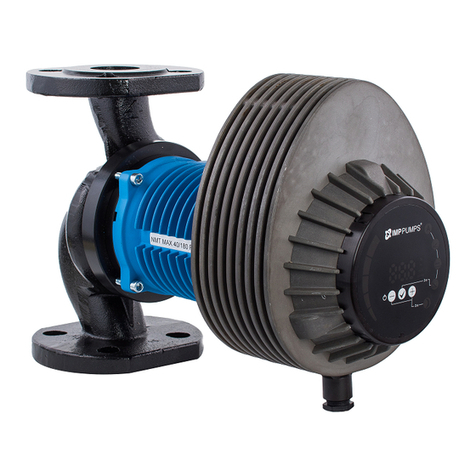
IMP PUMPS
IMP PUMPS NMT MAX Series Installation and operating manual

Blue Diamond
Blue Diamond Microblue installation instructions
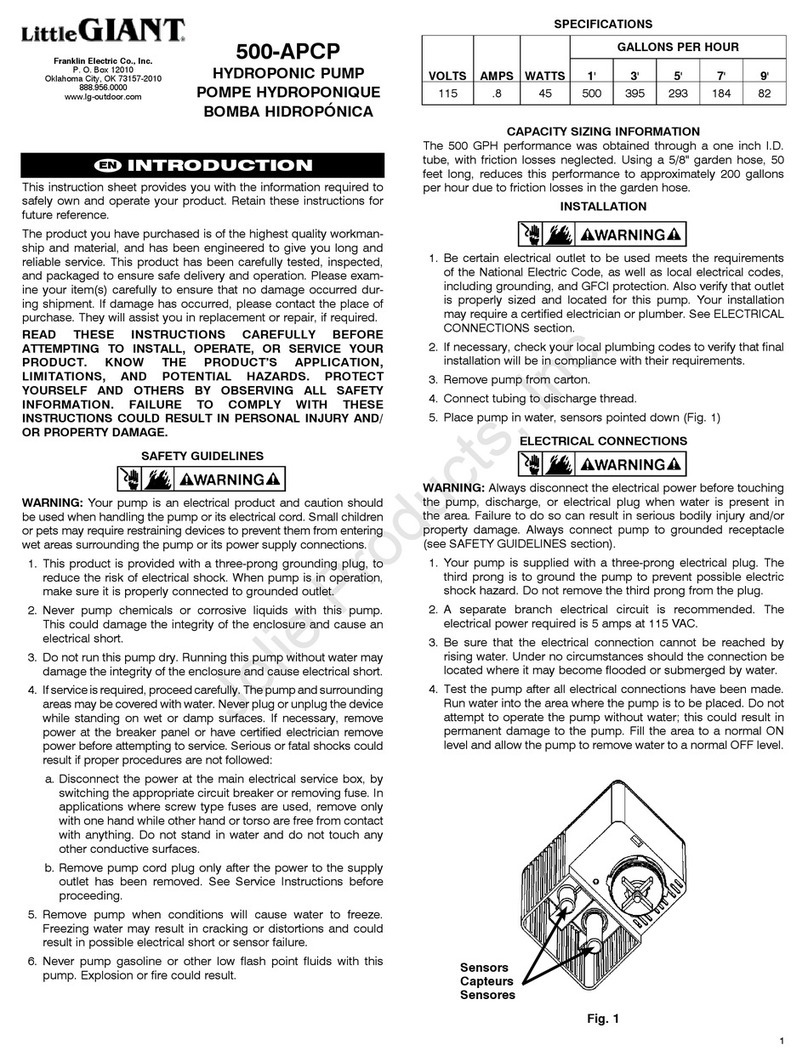
Little Giant
Little Giant 500-APCP quick start guide


